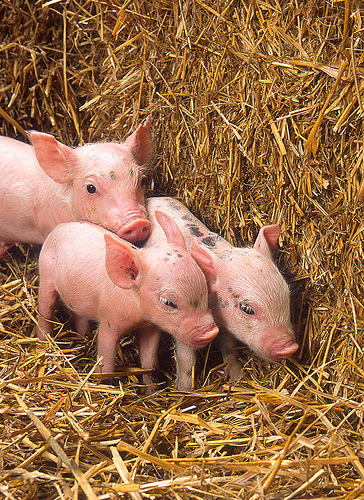Almost half of the pre-weaner pigs suddenly excrete yellowish watery diarrhea. The same alarming picture can be seen in neighboring pens, wherein almost seven out of 10 piglets in a litter die. “What infection has caused this unsightly scene to my farm?” a farmer thought while recalling the events that transpired during the recent days before the disease struck his farm. Though keeping himself unruffled, the ghastly disease progression displayed in front of him may just send him off the roof. Trying to muster composure, a farmer mentally recounts his earnings from the prior sale of the healthy finishers and the impending losses that is about to unfold right before his very eyes.

This horrendous sight is common among piggery farm owners as their animals experience bouts of gastrointestinal infections. Unfavorable incidents such as these, as experienced by our local swine producers, are replete with losses and economic impacts brought about by animal diseases. If only the pathogen has been detected before the animals exhibit the clinical symptoms, the battle can be considered as already half won.
Fret not, for animal health researchers from the College of Veterinary Science and Medicine of the Central Luzon State University (CLSU) have developed a diagnostic test kit that would be able to detect and diagnose one of the most virulent viral gastrointestinal infections in pigs, the porcine epidemic diarrhea or simply, PED.
A technology utilizing nucleic acid amplification of target pathogenic organisms of swine respiratory and gastro-intestinal infections to detect the presence of the infective agent in just half an hour has been developed. Other procedures take several hours to detect the diseased animal.
Due to its high specificity in detecting the diseased animals harboring the target pathogen and high sensitivity in ruling out healthy or non-diseased animals, Loop-mediated isothermal amplification or LAMP is currently being employed in the development of the PED RT-LAMP Test Kits.
LAMP technology produces tremendous copies of the target gene sequence in as short as 30 minutes. The nucleic acid amplification can be carried out using simple and less expensive equipment like a simple thermostat or water bath. LAMP is very comparable to the Enzyme-Linked Immunosorbent Assay (ELISA) kit and polymerase chain reaction (PCR) kit but is less affected by presence of non-targeted DNA or inhibitory molecules because of its high specificity and sensitivity.
Commercialization of the PED RT-LAMP Test Kits will greatly improve the welfare of the swine population and the local swine industry as a whole.
The technology on the early detection of diarrhea on swine with the use of PED RT-LAMP Test Kits is only one of the many research and development initiatives on livestock concerns supported by the Philippine Council for Agriculture, Aquatic, and Natural Resources Research and Development of the Department of Science and Technology (DOST-PCAARRD).
DOST-PCAARRD will showcase its leading R&D initiatives in the agriculture, aquatic, and natural resources sectors during its participation to the National Science and Technology Week (NSTW) on July 24-28 at SMX Mall of Asia, Pasay City.
The 2015 NSTW adopts the theme Philippines: A Science Nation Innovating for Global competitiveness. PCAARRD, on the other hand, adopts Strategic Industry S&T Program for Agri-Aqua Growth (SIPAG) ni Juan as its theme to bolster PCAARRD’s commitment to Outcome One.
“Outcome One serves as DOST’s blueprint towards alleviating poverty in the agriculture and aquatic sectors as part of the government’s social contract with our people,” said DOST Secretary Mario G. Montejo in his message during one of the events of the Council.
Outcome One seeks to provide science-based know-how and tools that will enable the agricultural sector to raise productivity to world-class standards. PCAARRD pursues its commitment to Outcome One through its Industry Strategic S&T Program, among other programs, hence the tagline SIPAG ni Juan.
by Super User
